
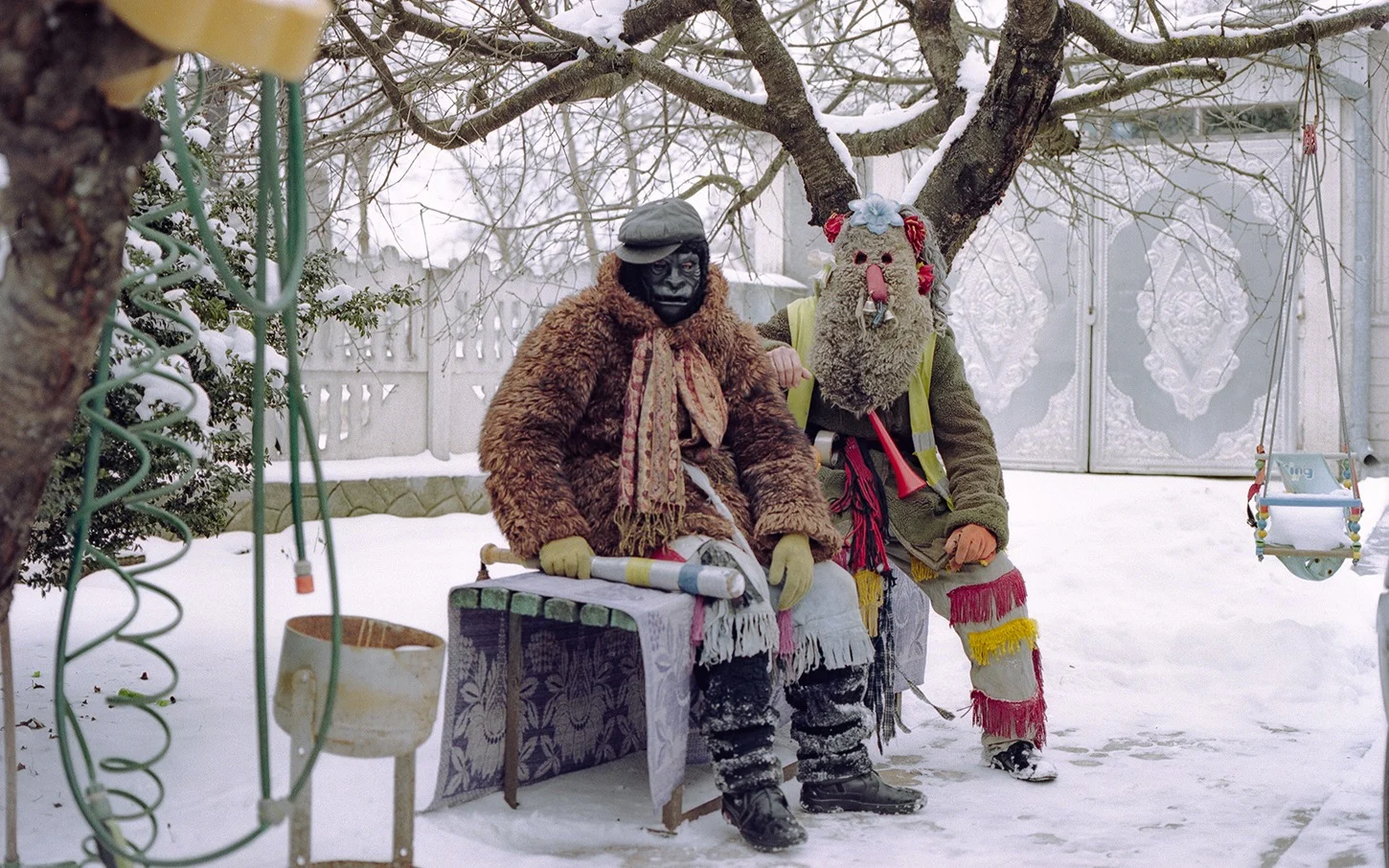
Malanka is a (traditionally pagan and Christian) folk holiday that’s celebrated across parts of Eastern Europe. It's steeped in tradition, but in recent years younger carnival-goers have been breaking away from those traditions and wearing costumes more in keeping with the modern world, a move which is disapproved of by many who hold the sacredness of the celebration close. Photographer Ramin Mazur’s series “Rural Carnival” focuses on the masks and costumes worn during Malanka celebrations, and here he tells Paula Erizanu that, through this project, he wants to capture the way the holiday is evolving over time, and the way traditions have a tendency to change and break.
Every winter, for the last five years, photographer Ramin Mazur has visited the villages of his native Moldova, and the neighboring Romania and Ukraine, where the carnivalesque tradition of malanka lives on, to capture it on camera. On New Year's Eve, which falls on 31 December in Romania and 13 January in Ukraine and most of Moldova (where they still obey the old Gregorian calendar for religious feasts) groups of masked men go from home to home to ward off the evil spirits of the past year. They often recite traditional prose poems and sing. Originally, the tradition was also a way for young men to find themselves wives. Yet, the ritual holds other meanings today — and nowadays some women are also donning a mask. Ramin joins the groups of Malanka performers, capturing the way the tradition has changed over time in his ongoing project, “Rural Carnival.”

In his first attempts, Ramin captured the event as a photo report, but he wasn’t satisfied with this approach. “I understood that those pictures relay the atmosphere of a fairy tale, but they don’t get across the concept of a carnival or a mask, whereby the poor becomes rich, the funeral turns into a wedding,” Ramin tells me. The role inversion is a reference to Mikhail Bakhtin’s writing on carnivalesque traditions, as a temporary anarchic reversal of the social norms. In order to get the shock factor of the mask across, Ramin started shooting individual portraits of each character. He thought the solution might lay in bringing the viewer face to face with the masked characters, rather than simply letting them observe the event from the sidelines.
Yet, the only time I saw a Malanka group in person, as I was crossing the Romanian-Ukrainian border one year, I was terrified of how violently they started beating the car I was in — like a raucous football fan club. The spirit, I learned, wasn’t unusual for a Malanka night. Indeed, this is how Ramin first heard of the tradition: via journalistic reports on the altercations of a group in Romania.
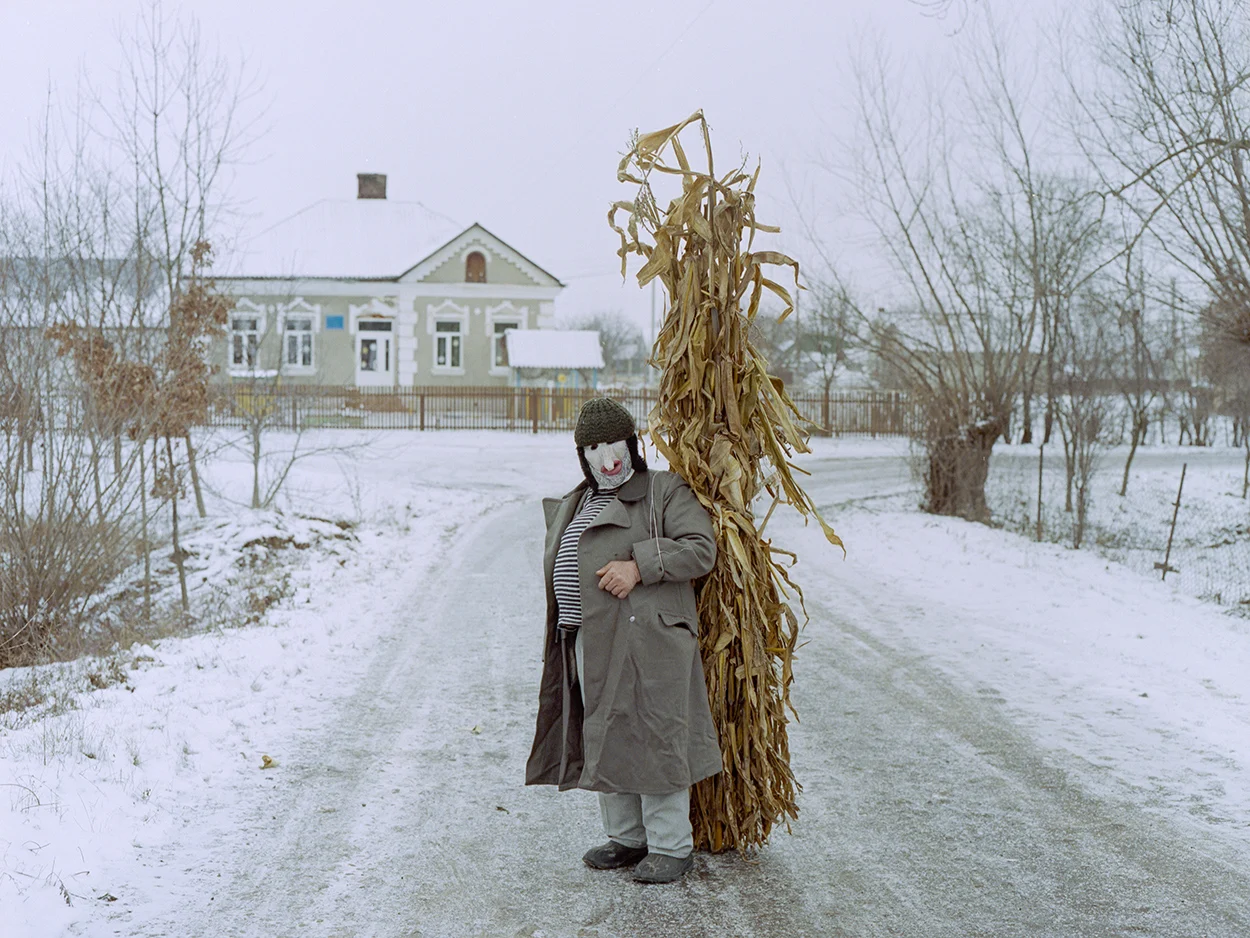
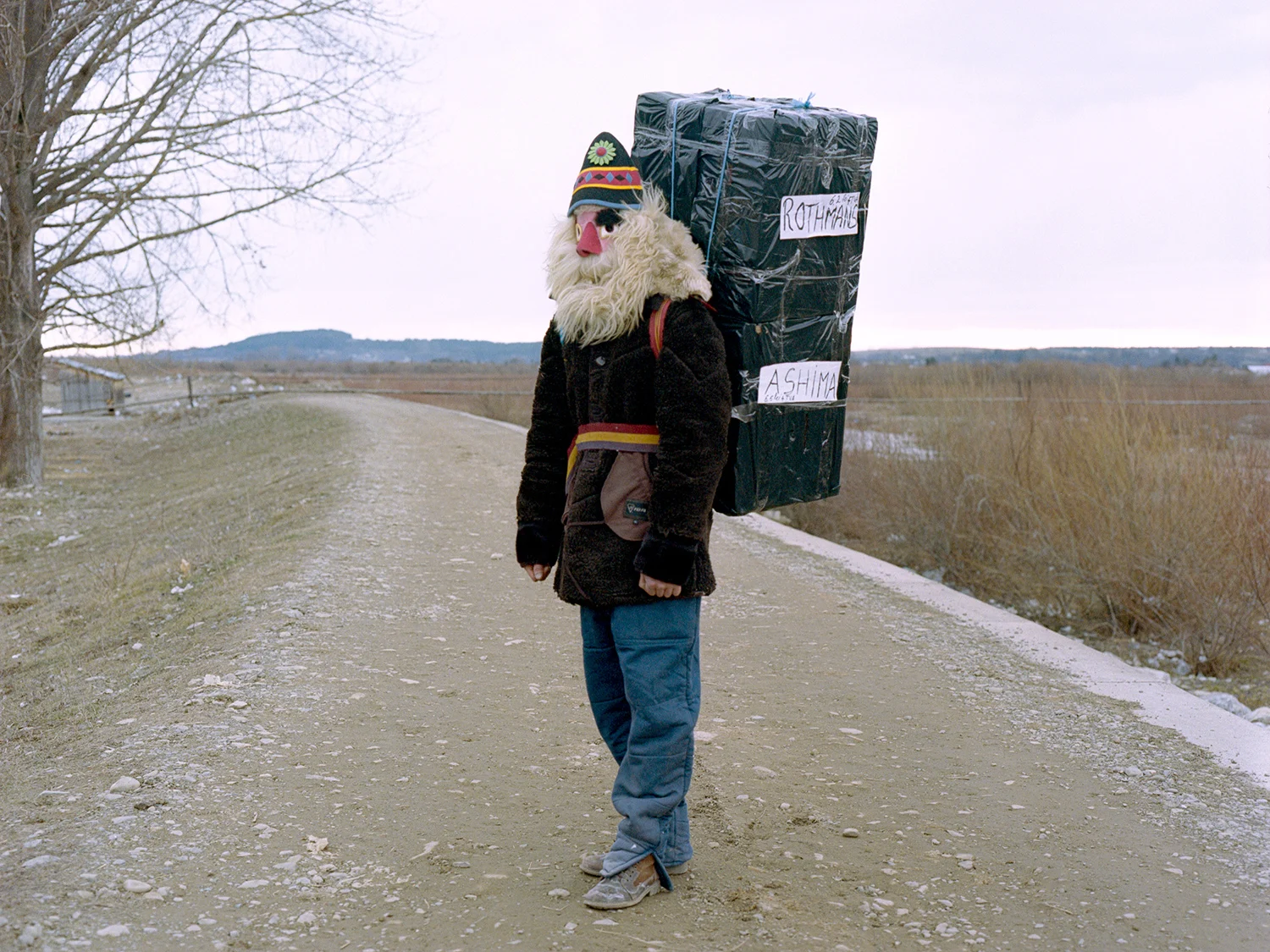
I ask Ramin if he’d ever experienced violence himself during Malanka. “They have been very welcoming towards me, especially given that I speak the same language, whether that’s Romanian or Ukrainian, but yes, I received a few batons on my back,” he says, matter-of-factly. “Today, we think and judge very quickly, perhaps because of the internet, where we can comment instantly. But aggression is an emotion and the important thing is to know what to do with it, how to release it safely.”
In Ramin’s view, carnival traditions like Malanka play a key psychological role in channeling our violent impulses. “The ritual helps you get rid of the worries of the past year. I don't believe in evil spirits but I do believe traditions like Malanka can help us free ourselves from the bad, destructive forces in our heads.”
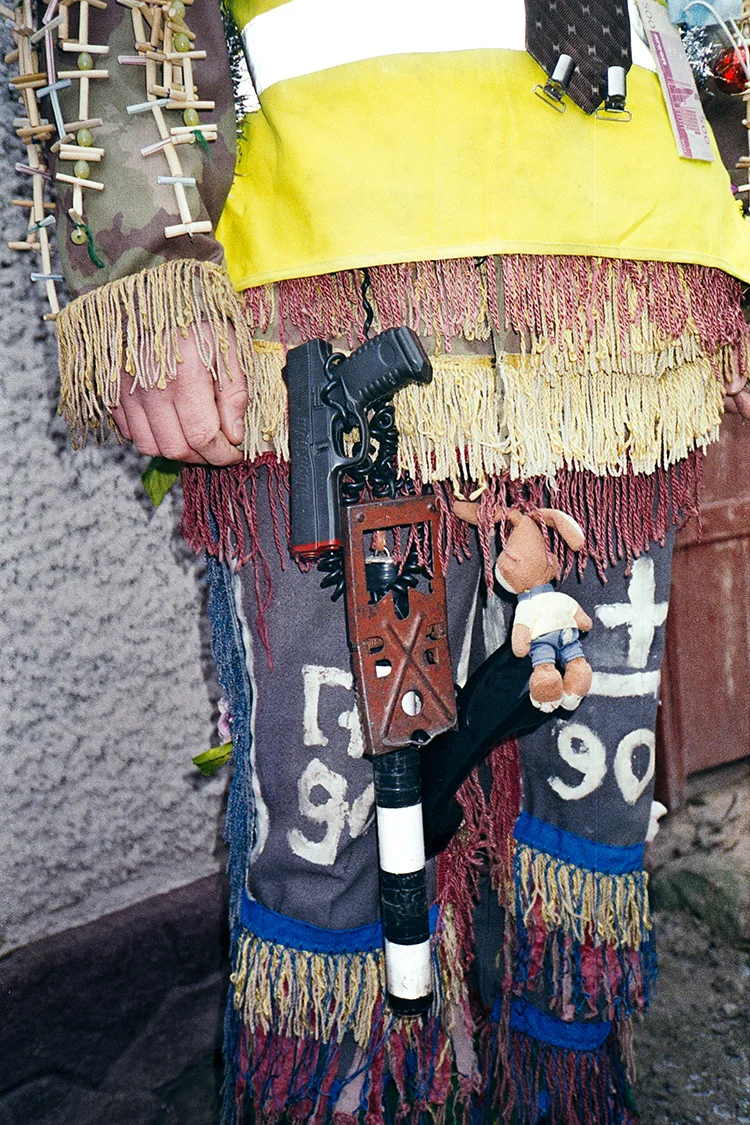



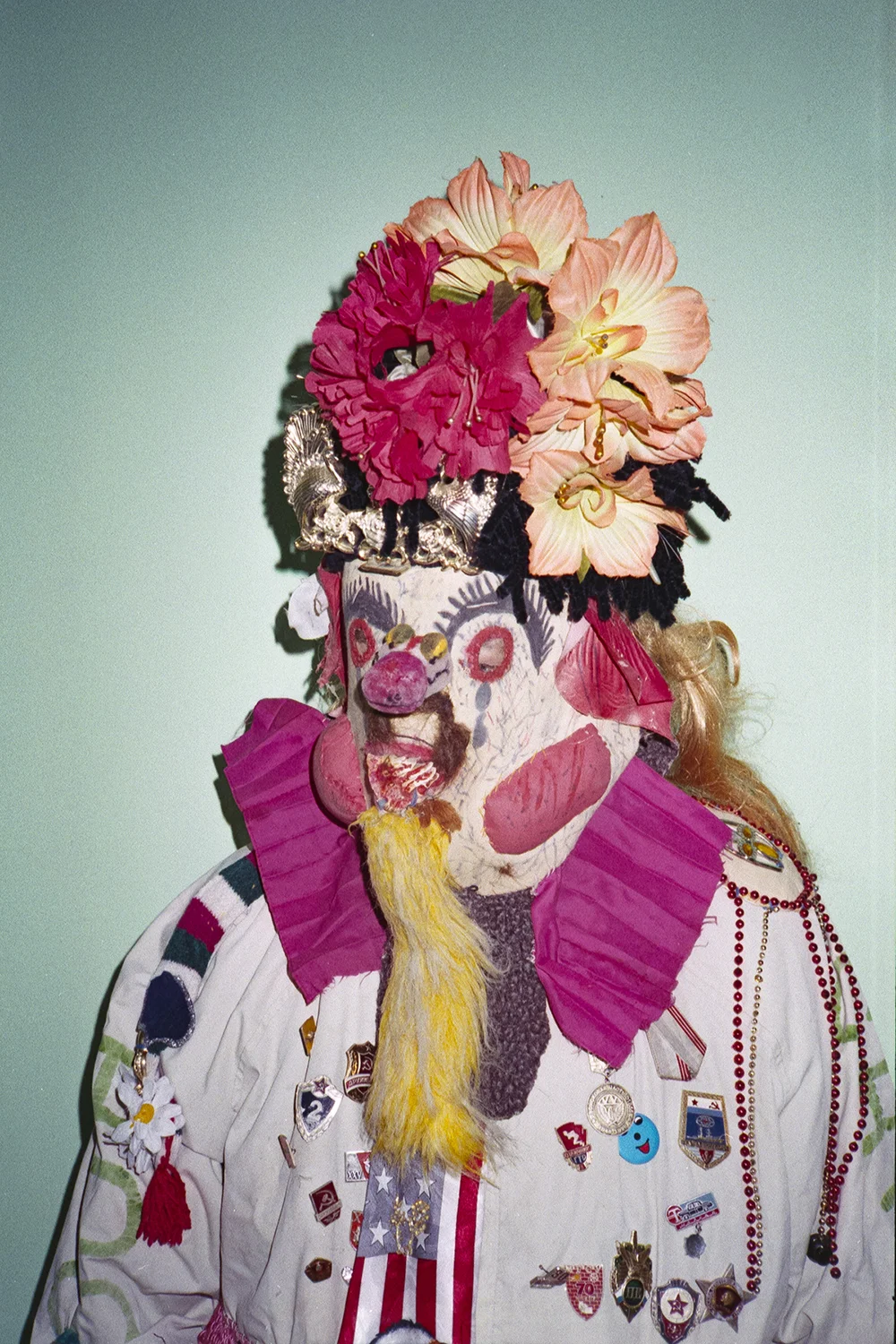
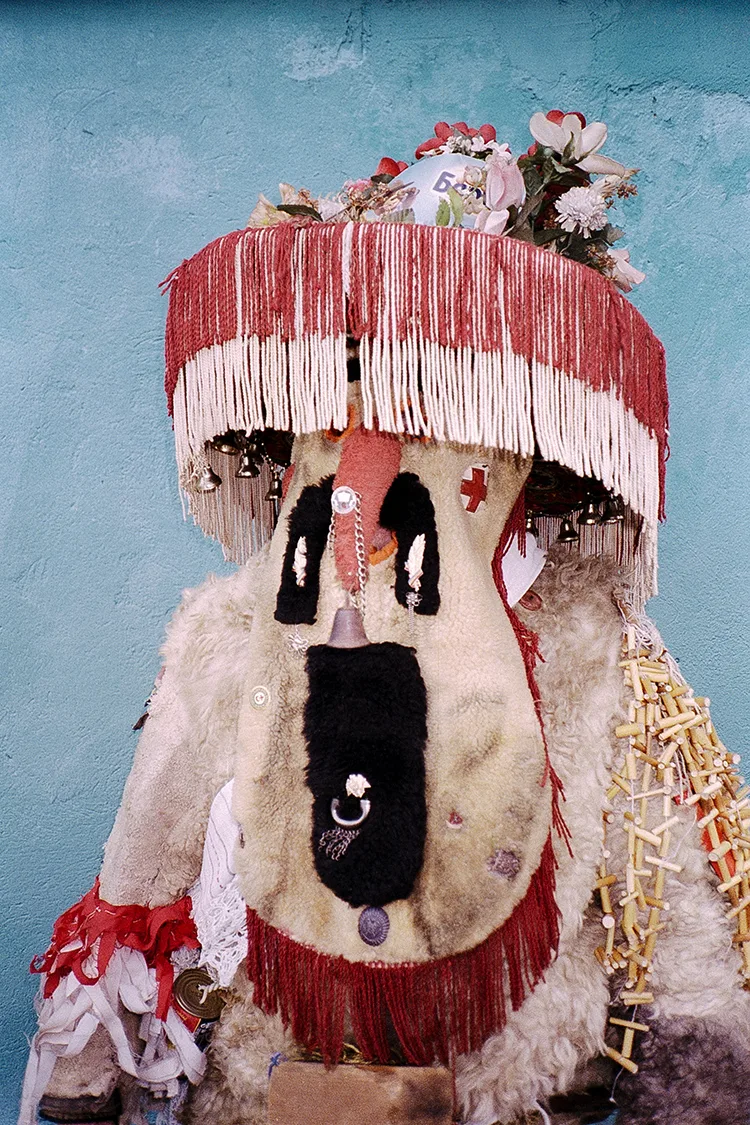
Tradition is using the original concept, while adapting the materials and script to today's realities.
Part of the sense of freedom — and unity — surrounding Malanka traditions comes from mask-wearing. Traditionally, the masks worn in Malanka represent village characters, such as the priest, the haidouks (Robin Hood type freedom fighters), the bride, the old man and woman. Yet, as the tradition develops, new characters pop into the performance across the region. In the village of Vicovu de Sus in the Romanian region of Bucovina – which is right on the border between Romania and Ukraine – Malanka performers dress up as cigarette smugglers, while others act as the police catching the lawbreakers. There, the tradition runs in parallel to a more old-fashioned representation of Malanka, financed by the local authorities and performed at the local theater. In the Moldovan village of Palanca, too, there is some tension between its local Ethnographic Museum and the local groups performing Malanka.
“Some guys wearing silicon, mass market outfits rather than handmade masks, told me they wouldn't be allowed with such masks in the museum,” Ramin recalls. “But what is tradition? Tradition is using the original concept,” he argues, “while adapting the materials and script to today's realities. A few decades or even centuries ago, the Malanka performer was limited to the culture of their own village — Palanca inhabitants didn't know what was taking place in, say, Paris.” Today, the culture is more interconnected, and so the Malanka, in turn, becomes more global. In the Ukrainian village of Bashnitsa, for instance, Ramin encountered Donald Trump masks while he was still acting as the US President, and Vladimir Putin masks being used since the ongoing war in the Donbas began. They were portrayed as the bad guys. “Malanka performances don't have many positive characters,” Ramin explains.


In his view, the carnival spirit of Malanka holds political power. For Ramin, there is no big difference between the use of masks in the 2011 Black Bloc protests in London and in rural carnivals. Indeed, while Malanka was banned or highly discouraged during the socialist era (in the Ukrainian village of Krasna, for instance, there were often altercations with the police), wearing masks, and therefore being unidentifiable, Malanka performers were able to get away with it.
“They still talk about it,” Ramin says. “In one Ukrainian village, they even fought over whether one person or another was there in the Malanka performance in the 70s.” The mockery of government and public officials is still a regular occurrence at Malanka.
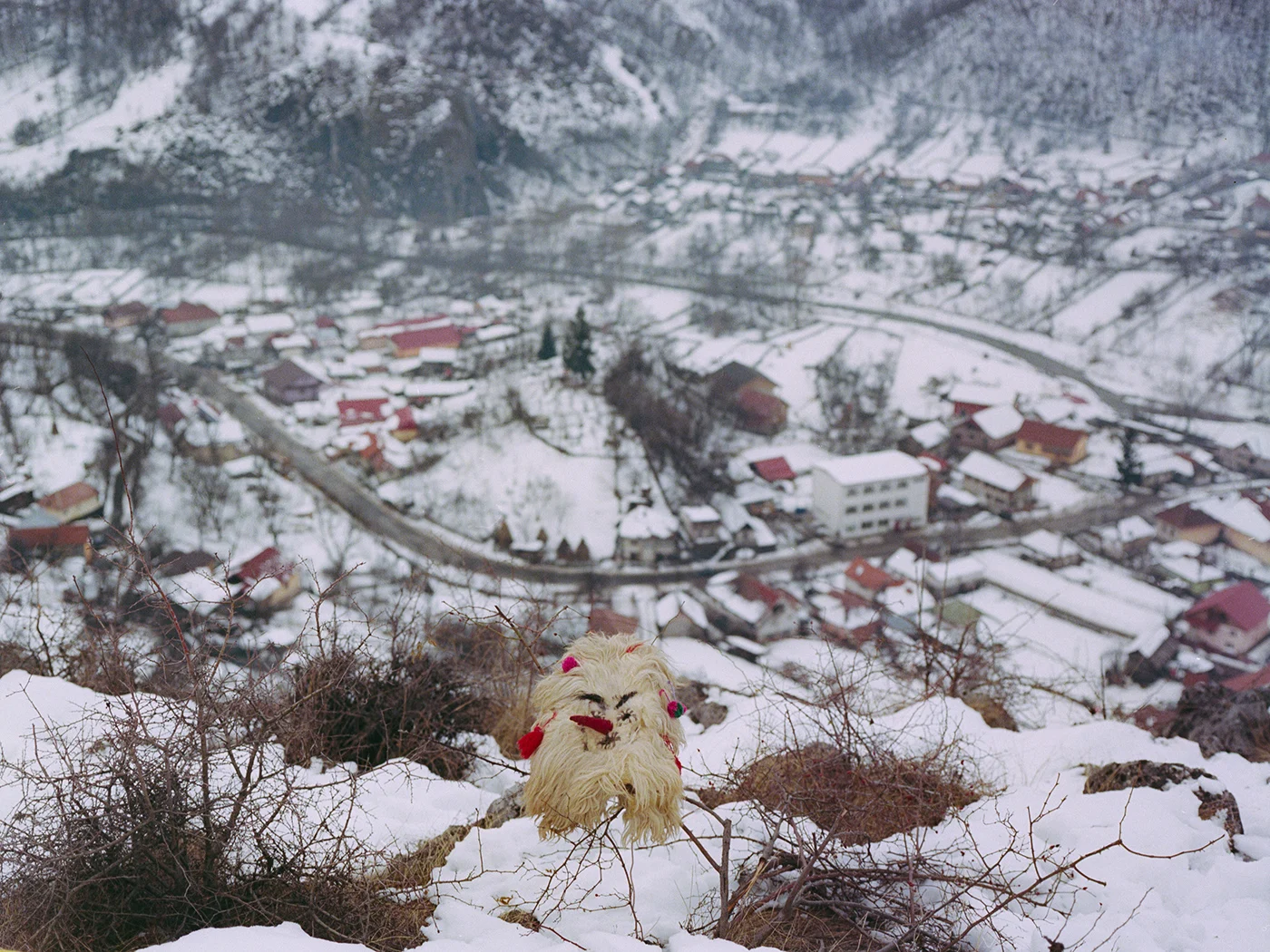
The ritual plays a paramount community-building role, with people who moved to other cities or countries coming back every year to their native village specifically for their dear Malanka. In one Ukrainian village, Ramin recalls meeting two young women dressed as military personnel, carrying lighting electro-shocks instead of the traditional whips used in Malanka. They were students in Chernivtsi who came back for the local rural carnival. Yet, as women hiding their gender through unisex, untraditional costumes, they gave this tradition a new, modern meaning.

